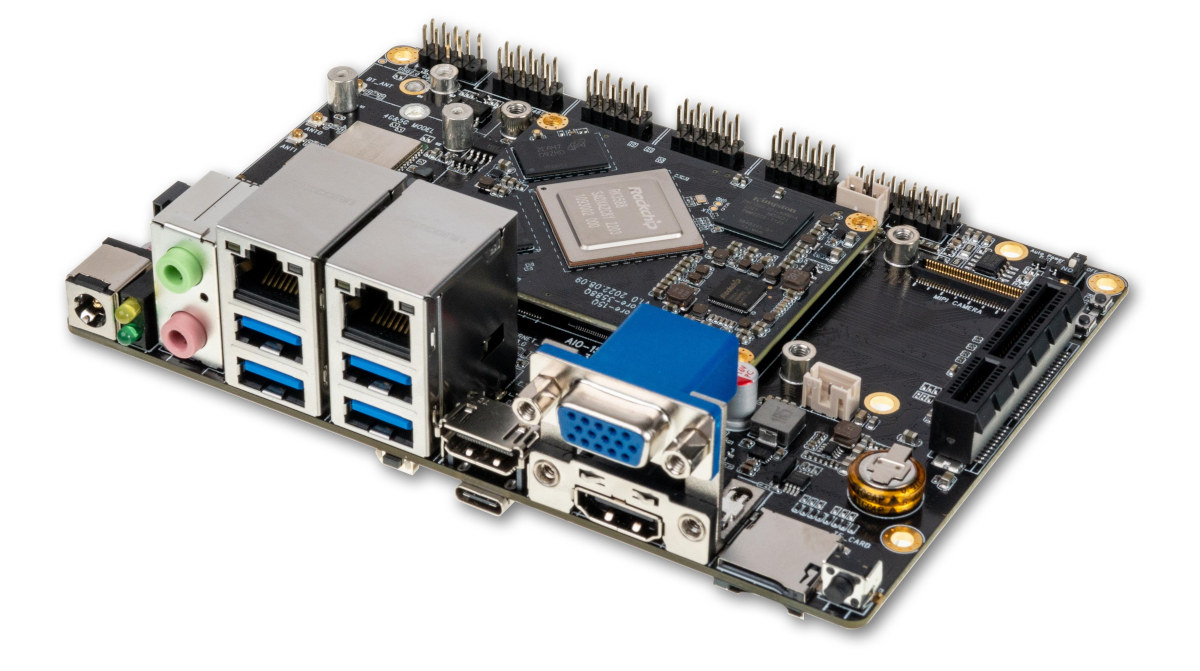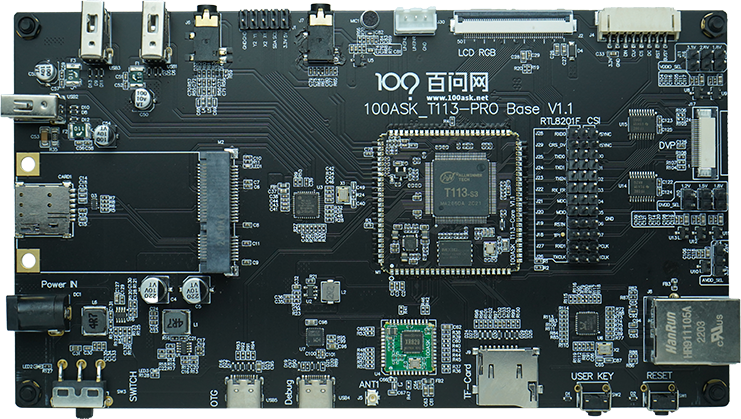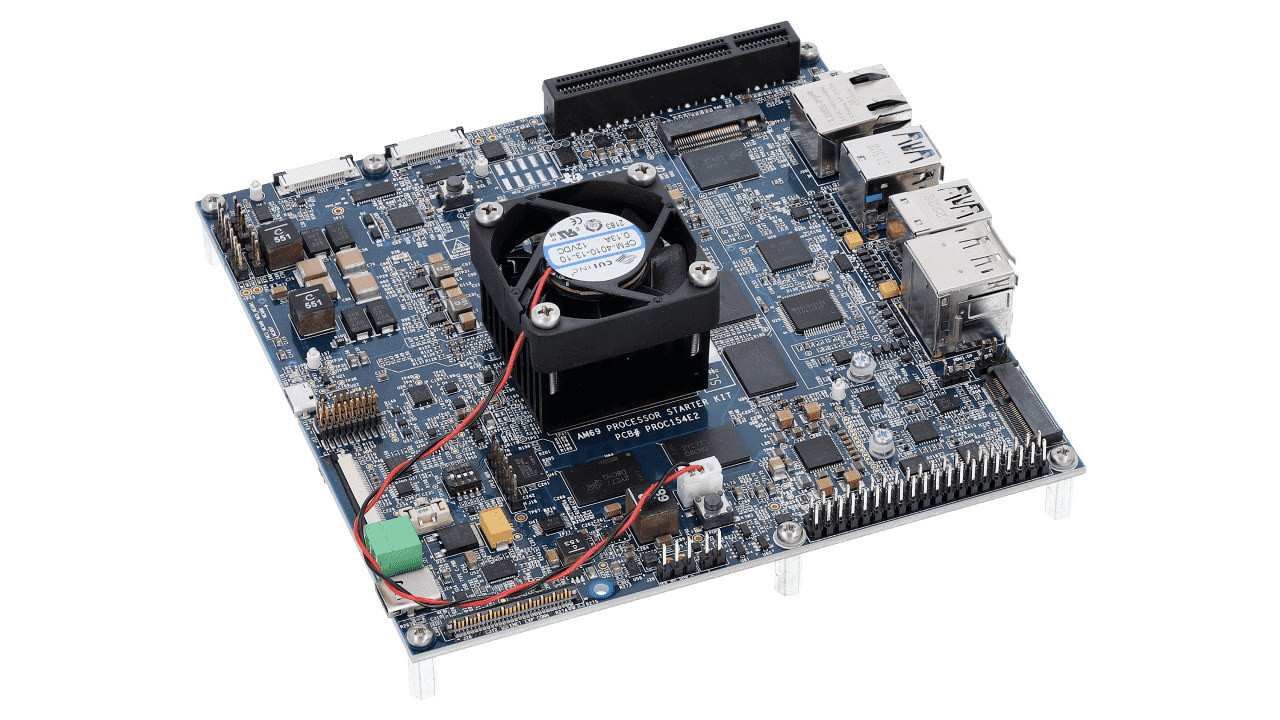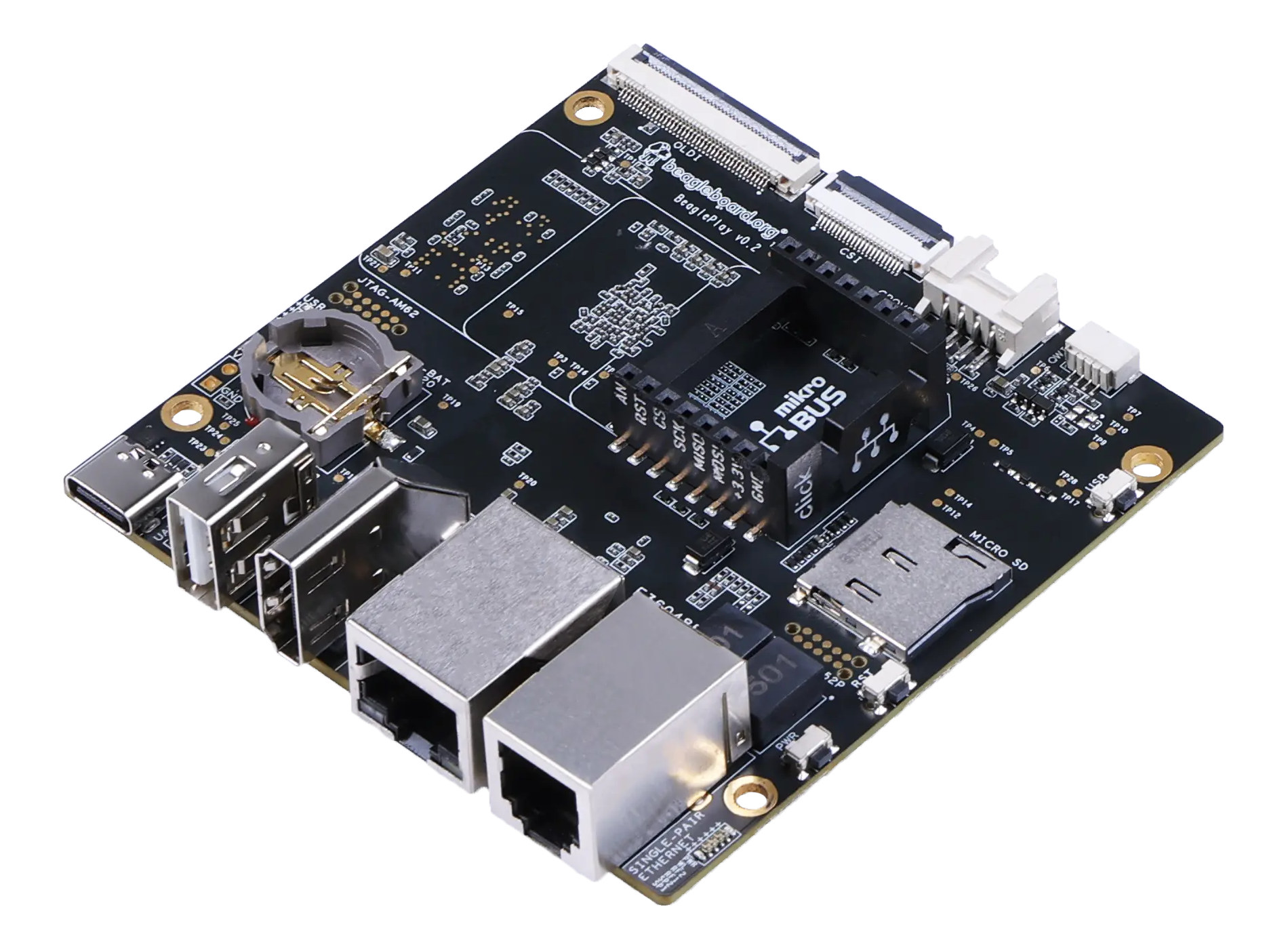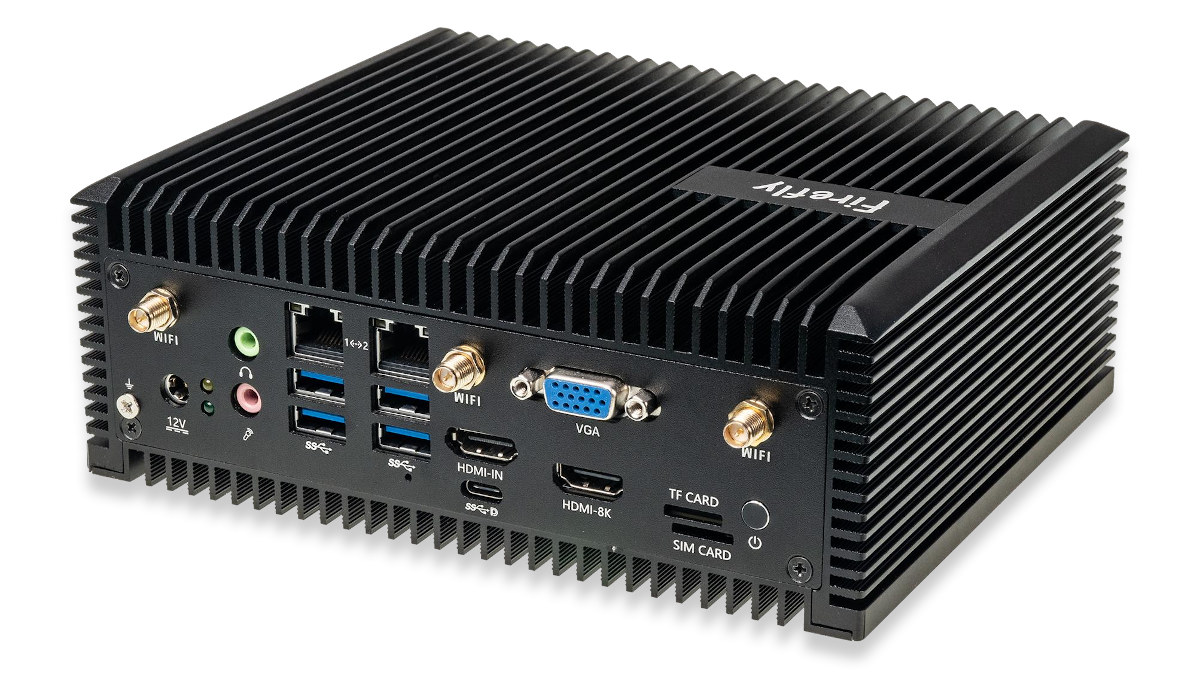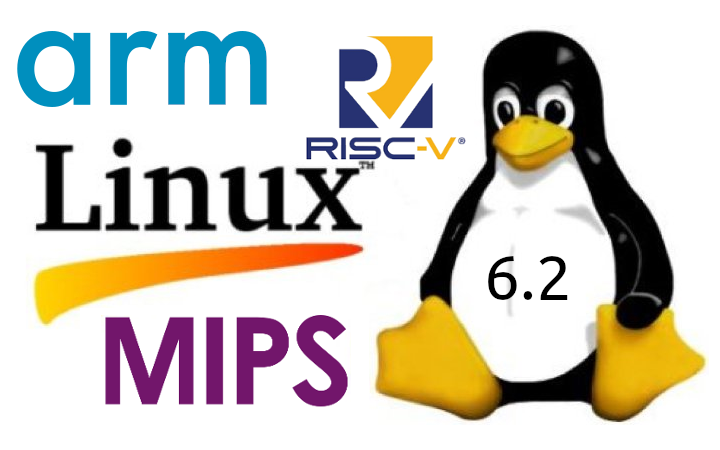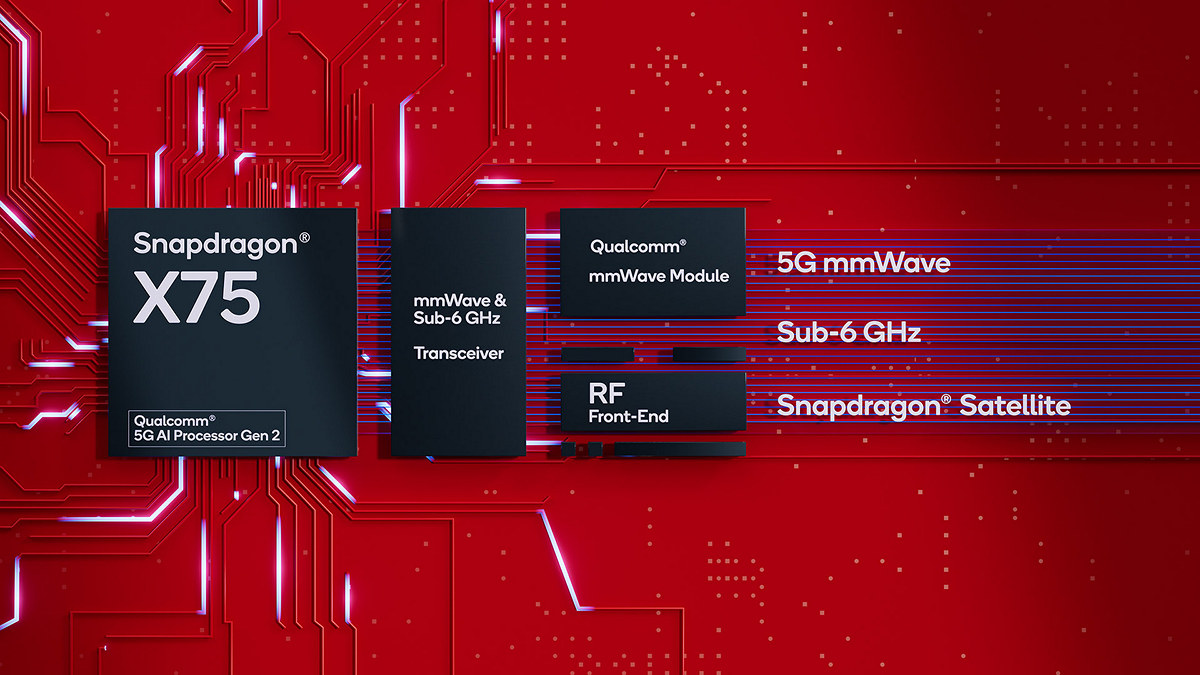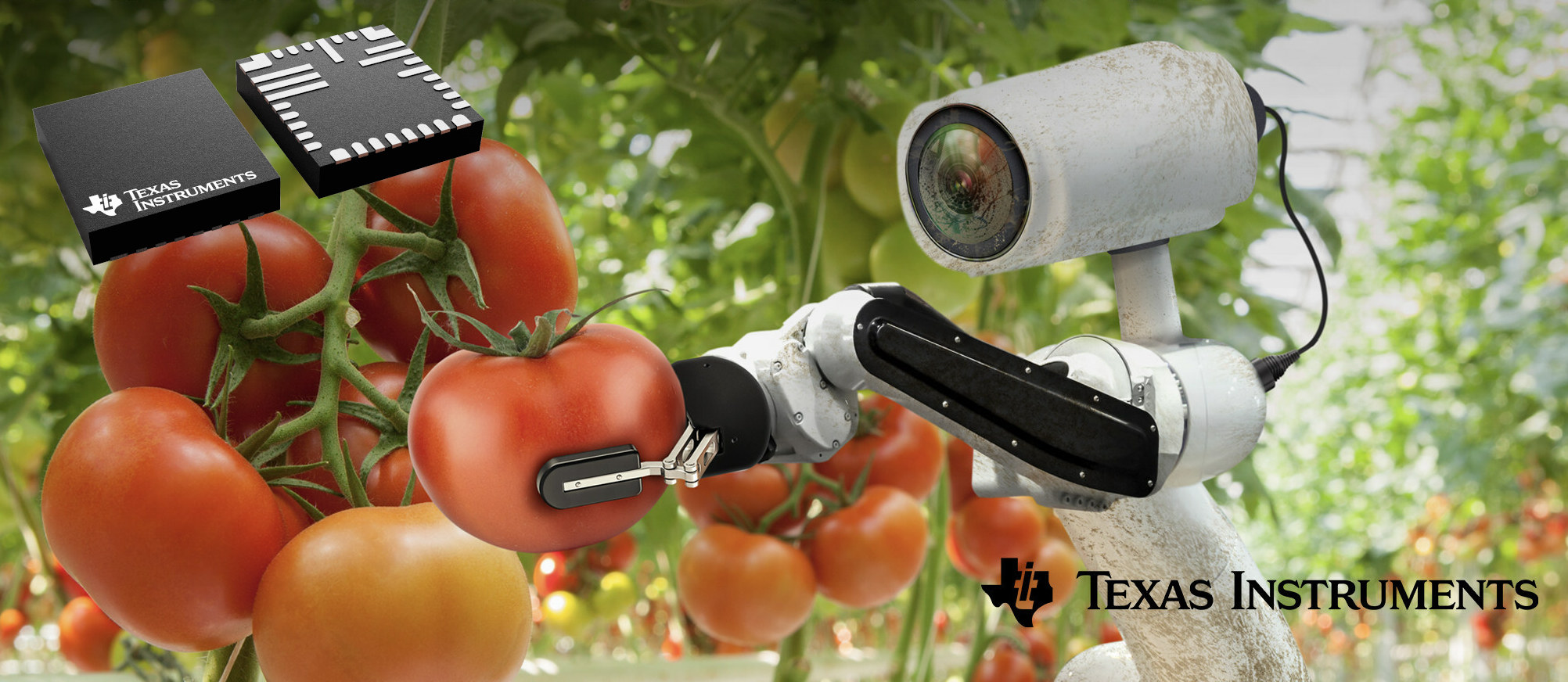Rockchip RK3588M is an automotive-grade variant of the Rockchip RK3588 octa-core Cortex-A76/A55 SoC that supports at least 6 Full HD displays and 16 camera inputs and can simultaneously run the car dashboard, in-vehicle infotainment, a digital rearview mirror, headrest monitors, ADAS system, and more. The frequency of the Cortex-A76 cores is limited to 2.1 GHz, and the Cortex-A55 cores to 1.7 GHz, against 2.4 and 1.8 GHz for RK3588, probably to operate in a larger temperature range required by the automotive market. I could not find any RK3588M datasheet yet, but we can find more details through the Firefly AIO-3588MQ automotive mainboard built around the RK3588M processor. Firefly AIO-3588MQ specifications: SoC – Rockchip RK3588M octa-core processor with CPU 4x Cortex-A76 cores @ up to 2.1 GHz, 4x Cortex-A55 cores @ up to 1.7 GHz Arm Mali-G610 MP4 GPU with OpenGL ES 3.2, OpenCL 2.2, Vulkan 1.1 support 6 TOPS AI […]
100ASK-T113-Pro Allwinner T113-S3 industrial board, and Allwinner T113-S4 with 256MB DDR3
Last year, Jean-Luc introduced the T113-S3 processor and the small MangoPi-Dual board with T113-S3. This time, I will introduce a development board with relatively rich resources, the 100ASK-T113-PRO, which consists of a core board with T113-S3 and a carrier board with a large number of peripheral interfaces, and the upcoming Allwinner T113-S4 SoC with 256MB DDR3. 100ASK-T113-Pro Allwinner T113-S3 industrial board While the T113-S3 and D1s/F133 RISC-V processors are pin-to-pin compatible, the T113-S3 is a dual-core Arm Cortex-A7 processor with HiFi4 DSP, CAN interfaces added (CAN is not mentioned publicly, but can be seen in the T113-S3 Datasheet) and 128MB DDR3 on-chip memory. 100ASK-T113-PRO preliminary specifications: T113-S3 Core Lite: SoC – Allwinner T113-S3 CPU – Dual-core Arm Cortex-A7 with 32 KB L1 I-cache + 32 KB L1 D-cache per core, and 256 KB L2 cache DSP – Single-core HiFi4 Memory – 128 MB DDR3 (SIP) Storage – 16MB SPI NandFlash […]
Texas Instruments unveils AM62A, AM68A and AM69A Arm Cortex Vision processors and devkits
Texas Instruments AM62A, AM8, and AM69A Arm Cortex-A53 or Cortex-A72 Vision processors come with 2 to 8 CPU cores and deep learning accelerators delivering from 1 TOPS to 32 TOPS for low-power vision and artificial intelligence (AI) processing in applications such as video doorbells, machine vision, and autonomous mobile robots. Three families and a total of 6 parts are available: AM62A3, AM62A3-Q1, AM62A7, and AM62A7-Q1 single to quad-core Cortex-A53 processors support one to two cameras at less than 2W in applications such as video doorbells and smart retail systems. Equipped with a 1TOPS vision processor, the AM62A3 is the cheapest model of the family going for US$12 in 1,000-unit quantities. AM68A dual-core Cortex-A72 processor can handle one to eight cameras in applications like machine vision, with up to 8 TOPS of AI processing for video analytics. AM69A octa-core Cortex-A72 SoC supports up to 12 cameras and achieves up to 32 […]
BeaglePlay – A $99 Texas Instruments AM625 industrial SBC with plenty of communication and expansion options
The BeagleBoard.org Foundation has just launched their latest single board computer with the BeaglePlay SBC powered by a Texas Instruments AM625 Cortex-A53/M4/R5 processor with 16GB eMMC flash, 2GB DDR2, and a wide range of I/Os, wired and wireless communication options, and support for expansion module compatible with MikroBus, Grove, and Qwiic connectors. Two wired Ethernet are offered, namely a typical Gigabit Ethernet RJ45 port, as well as a single-pair Ethernet RJ11 port limited to 10 Mbps but with a much longer range and power over data, and wireless connectivity includes dual-band WiFi 4, Bluetooth LE, and Sub-GHz. The board also features HDMI and MIPI DSI display interfaces and a MIPI CSI camera interface. BeaglePlay specifications: SoC – Texas Instruments Sitara AM625 (AM6254) with Quad-core 64-bit Arm Cortex-A53 processor @ 1.4 GHz Arm Cortex-M4F at up to 400 MHz Arm Cortex-R5F PowerVR Rogue 3D GPU supporting up to 2048×1080 @ 60fps, […]
8K AI embedded computer gets 4K HDMI input, WiFi 6, dual GbE interfaces, and more
Firefly EC-A3588Q is a fanless 8K AI embedded computer powered by a Rockchip RK3588 processor and fitted with up to 32GB RAM, SATA or NVMe storage, offering dual Gigabit Ethernet, WiFi 6, Bluetooth 5.0, and optional 5G/4G cellular connectivity, dual 8K video outputs, etc… It is a higher-end and larger version of the Firefly EC-R3588SPC industrial mini PC based on the Rockchip RK3588S processor that adds a 4K HDMI input port, a VGA output port, gets two GbE interfaces and support for WiFi 6/Bt 5.0, offers more USB ports, and replaces some terminal blocks with DB9 interfaces for RS232, RS485, and CAN Bus interfaces. Firefly EC-Q3588Q specifications: SoC – Rockchip RK3588 octa-core processor with CPU – 4x Cortex-A76 cores @ up to 2.4 GHz, four Cortex-A55 cores @ up to 1.8 GHz GPU – Arm Mali-G610 MP4 quad-core GPU with OpenGL ES3.2 / OpenCL 2.2 / Vulkan1.1 support AI accelerator […]
Linux 6.2 release – Main changes, Arm, RISC-V, and MIPS architectures
Linux 6.2 has just been released with Linus Torvalds making the announcement on LKML as usual: So here we are, right on (the extended) schedule, with 6.2 out. Nothing unexpected happened last week, with just a random selection of small fixes spread all over, with nothing really standing out. The shortlog is tiny and appended below, you can scroll through it if you’re bored. Wed have a couple of small things that Thorsten was tracking on the regression side, but I wasn’t going to apply any last-minute patches that weren’t actively pushed by maintainers, so they will have to show up for stable. Nothing seemed even remotely worth trying to delay things for. And this obviously means that the 6.3 merge window will open tomorrow, and I already have 30+ pull requests queued up, which I really appreciate. I like how people have started to take the whole “ready for […]
Snapdragon X75 modem brings 5G Advanced to smartphones, IoT, and FWA routers
Qualcomm Snapdragon X75 is the latest 5G Modem-RF System from the company bringing 5G Advanced connectivity to smartphones, PCs, industrial IoT, vehicles, and 5G Fixed Wireless Access (FWA) routers. 5G is getting more confusing than ever, as after just having launched a 5G NR-Light modem for smartwatches, industrial IoT, and XR glasses, Qualcomm introduced the first “5G Advanced” modem with the Snapdragon X75 targetting a wide range of applications that benefit from the improvements in speed, coverage, mobility, power efficiency, etc… made possible by the 5G NR Release 18. Snapdragon X75 key features and specifications: Cellular Technology – 5G NR, LTE, LAA, WCDMA, TD-SCDMA, GSM/ Edge, CBRS, Dynamic Spectrum Sharing (DSS), EN-DC, NR-DC, mmWave, sub-6 GHz 5G Spectrum – mmWave-sub6 aggregation, sub-6 carrier aggregation (FDD-TDD, FDD-FDD, TDD-TDD), FDD-TDD support for uplink-CA, Dynamic Spectrum Sharing (DSS) 5G Modes – FDD, TDD, SA (standalone), NSA (non-standalone) Up to 10CC aggregation in mmWave, […]
TI unveils ULC1001 ultrasonic lens cleaning chip for self-cleaning cameras
Texas Instruments (TI) has introduced the ULC1001 digital signal processor (DSP) ultrasonic lens cleaning (ULC) technology designed – when combined with DRV2901 piezo transducer driver – for self-cleaning camera systems to quickly detect and remove dirt, ice, and water using microscopic vibrations. Cameras used in the automotive, industrial, robotics, and smart farming industries may require cleaning from time to time and that usually means manual cleaning leading to potential downtime, higher maintenance cost, and so on. It could also be done through mechanical parts but that adds further complexity to the system, so instead, Texas Instruments ULC1001 and DRV2901 combo enables cameras to rapidly self-clear contaminants using vibrations to eliminate debris. The datasheet describes the ULC1001 as a “Configurable Ultrasonic PWM Modulator With I/V Sense Amplifiers” with the following specifications: Integrated Programmable Cleaning Modes Water (expelling) Deice (melting and expelling) Mud (dehydrating and expelling) Auto-Cleaning (detecting and expelling) Custom Cleaning […]


